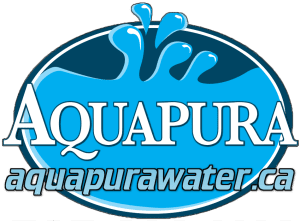e-Transfer Discounts
Mulmur, Ontario (Main Store)
Aquapura Water Products
938311 Airport Road
L9V0M1
(705)-466-1144
Shop With
Confidence

A water softener is an appliance which softens the water of your house. In most cases, it is installed as a point of entry whole house system with the possibility of having certain water lines bypassed. The most common type is the conventional two tank water softener which includes a mineral tank and a brine tank. The mineral tank stores the water softening resin and has a control valve at the top. The control valve is the head of the unit and controls how often and when the water softener will regenerate. the second tank is the brine tank which holds water and salt. Salt is placed into the brine tank and mixes with water in order to make brine water.
There are also cabinet water softeners which incoporate these two tanks in one bigger rectangular tank. The logic of this is that these units save space by placing the mineral tank inside of the brine tank. The issue is that these units are significantly more difficult to maintain, service and repair. For example, rebedding a cabinet water softener now involves taking off the top of the cabinet and lifting the mineral tank out of the salt and brine water. This mineral tank is full of wet resin and water making it heavy to lift up and over a brine tank. We do not feel that the minimal space saving benefits are worth the extra trouble and urge you to stay away from these cabinet, all-in-one systems.
While the unit is in service, water passess through the inlet of the water softener control valve and into the mineral tank which is full of little plastic beads known as water softening resin. Water is pushed through the resin untill it reaches the bottom of the tank. Along the way, the water softening resin grabs hardness compounds like calcium and magnesium and exchanges them with sodium ions. This exchange causes the water to be soft. The soft water then passes through the riser basket (lower distributor) and up through the riser tube in the center of the mineral tank. The purpose of the riser basket is to only allow water through without letting resin through the system. The riser tube attatches to the control valve and directs the softened water to the outlet of the softener and to the rest of your house.
The water softener resin will only grab hardness compounds until the water softening resin becomes full of calcium and magnesium hardness. Once the resin has been exhausted, the softener will need to regenerate and become recharged with brine (salt) water. There are several water softener control valves with various amounts of cycles and cycle lengths. For this example we will be using a Purifiner Water Softener with an Erie Control Valve.
The first cycle is the backwashing softener which cleans the resin of the the calcium and magnesium and impurities like sediment or silt. Water is drawn from the inlet of the water softener and flows down the riser tube and up through the resin from the bottom distributor. This is opposite to how the softener acts in service mode since the purpose is now to clean the resin of hardness and impurities. After flowing through the resin, the water softener will pass through the control valve again and out through the drain line. This cycle uses around 1.5GPM-3.5GPM for a residential softener and is usually 10 minutes.
The second cycle is the brine draw cycle where brine water is drawn from the brine tank. Brine water is formed in the brine tank as a result of the tank’s water mixing with the salt that is added to the tank. This brine water is drawn into the resin tank where it charges the water softener resin to allow it excange calcium and mangesium ions with salt ions. With an Erie control valve, this would also be the slow rinse cycle once the appropriate amount of salt has been drawn. During the slow rinse, any excess salt is cleaned from the softener as to prevent the water from having an extra salty taste.
The final cycle is the fast rinse (rapid rinse, bed compact) cycle. The water enters the tank the same way it does in service mode, with water passing through the resin and up the riser tube. This is done at a higher flow rate than the fill cycle, but a lower flow rate than the initial backwash cycle. The purpose of the fast rinse cycle is to compact the bed back down so the unit is ready for service mode. During the other cycles, the resin bed is lifted and mixing around in the water. Without settling the bed and compacting it properly, there may be water channelingleading to hardwater getting through the softener.
Aquapura Water Products
938311 Airport Road
L9V0M1
(705)-466-1144

